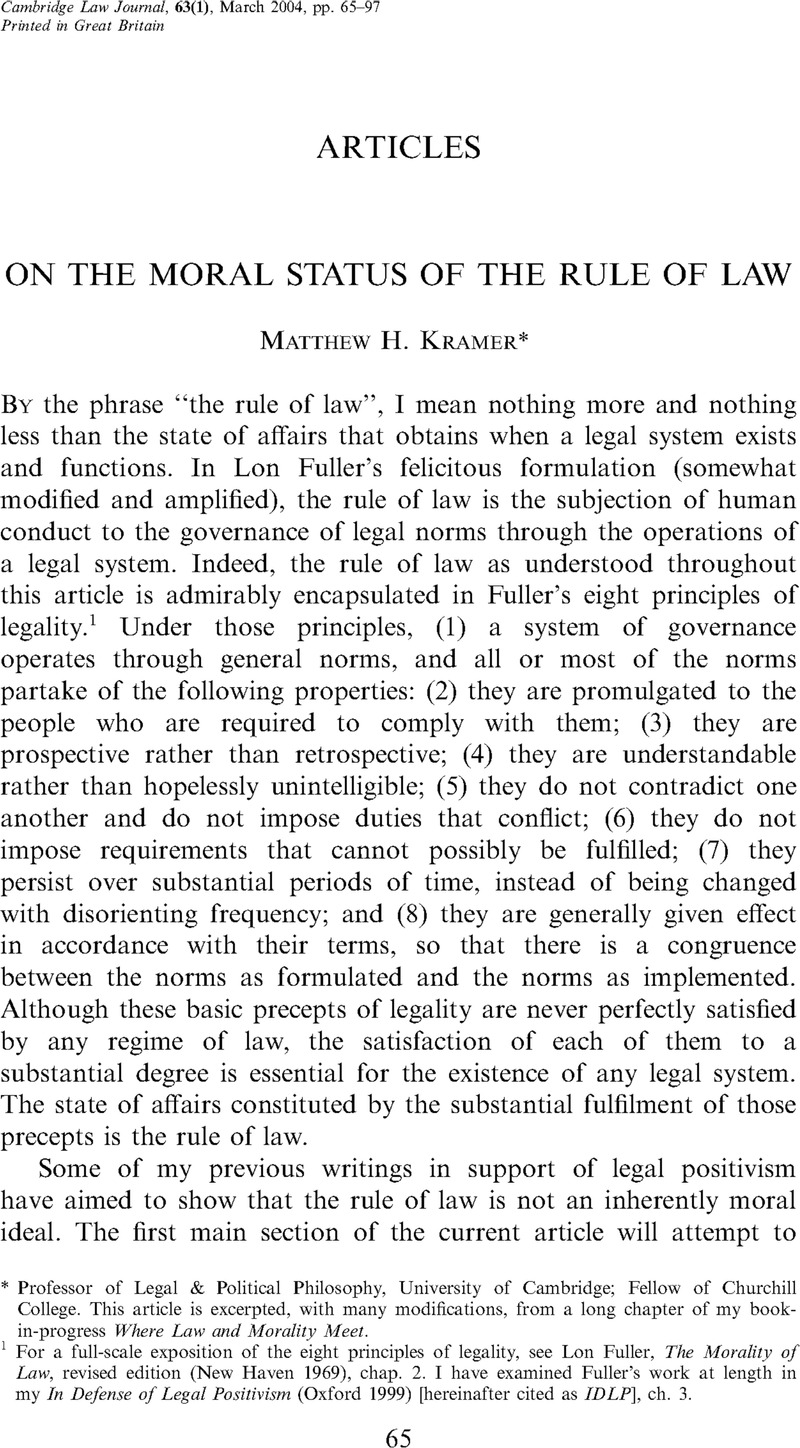Published online by Cambridge University Press: 14 April 2004

This article is excerpted, with many modifications, from a long chapter of my bookin-progress Where Law and Morality Meet.
1 For a full-scale exposition of the eight principles of legality, see Fuller, Lon, The Morality of Law, revised edition (New Haven 1969)Google Scholar, chap. 2. I have examined Fuller's work at length in my In Defense of Legal Positivism (Oxford 1999) [hereinafter cited as IDLP], ch. 3.
2 Through most of this article, I rely on a standard distinction between morality and prudence. Somebody's prudential reasons-for-action are focused exclusively or primarily on his own interests and only derivatively if at all on the interests of other people. Somebody's moral reasons-for-action are focused exclusively or primarily on other people's interests and only derivatively if at all on his own interests (apart from interests, such as a concern for acting in a morally proper fashion, which are themselves defined by reference to the well-being of other people).
3 The lines of argument are presented chiefly in chapters 3 and 4 of IDLP, but they undergo elaboration in some of the subsequent chapters.
4 Dickens, Charles, The Old Curiosity Shop (Everyman edition, London 1995), p. 231.Google Scholar
5 For a discussion of the difference between scalar and non-scalar properties, see Kramer, Matthew H., The Quality of Freedom (Oxford 2003), pp. 169-184Google Scholar.
6 N.E. Simmonds, Central Issues in Jurisprudence, 2nd. edn. (London 2002) [hereinafter cited as Simmonds, Issues].
7 Ibid., p. 226. For a passage that similarly elides the distinction between actual motivations and reasons-for-action, see ibid., p. 230.
8 Equally unfortunate is the following sentence, which relies on the word “assiduous” for its truth: “A regime that makes an assiduous effort to follow Fullerian precepts is motivated by a moral aspiration, not by a desire to advance wicked goals with maximum efficiency” (Simmonds, Issues, 233).
9 For the sake of stylistic simplicity, I am assuming here that the disparity will remain positive; that is, I am assuming that the probability of undergoing punishment for non-compliance will remain higher than the probability of undergoing punishment despite compliance.
10 I should note that corruption, in the sense of a willingness by an official to accept payments or other inducements in return for declining to enforce the norms which he is supposed to enforce, will in some contexts be morally preferable to his unwavering performance of his role. When a guard in a Communist gulag or a Nazi concentration camp takes bribes in return for conniving at transgressions of the odious rules which he is supposed to enforce, he acts less appallingly than if he were to give effect to the rules with unflinching sternness.
11 Simmonds, Issues, chap. 8; Simmonds, N.E., “Rights at the Cutting Edge”, in Kramer, Matthew H., Simmonds, N.E., and Steiner, Hillel, A Debate over Rights (Oxford 1998), pp. 113, 146-195Google Scholar.
12 Simmonds, Issues, 239-240. Because of constraints of space, I have here had to leave some of Simmonds's replies undiscussed. I respond to them fully in the chapter from which this article has been excerpted.